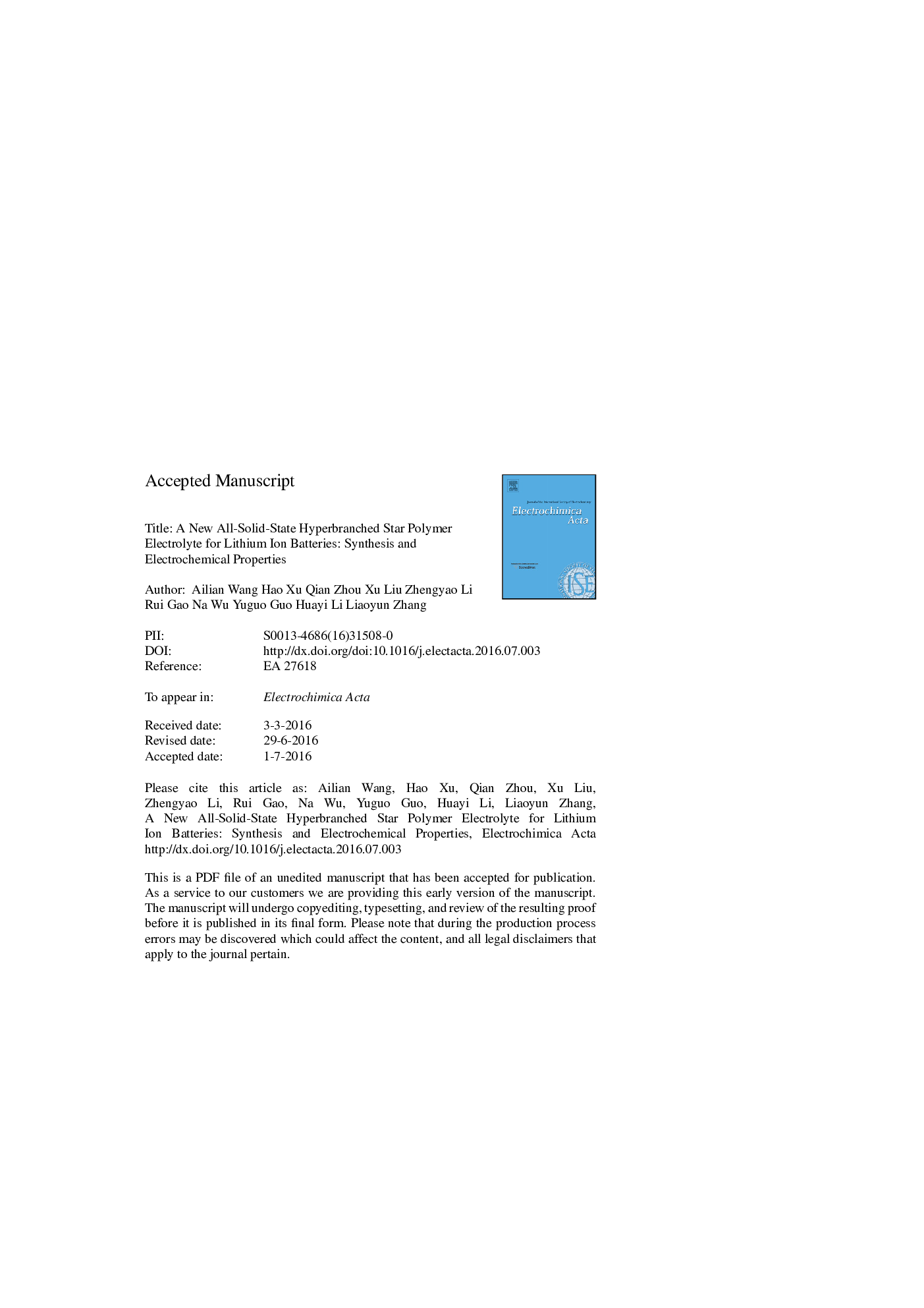| Article ID | Journal | Published Year | Pages | File Type |
|---|---|---|---|---|
| 6606017 | Electrochimica Acta | 2016 | 45 Pages |
Abstract
A new hyperbranched multi-arm star polymer with hyperbranched polystyrene (HBPS) as core and polymethyl methacrylate-block-poly(ethylene glycol) methyl ether methacrylate(PMMA-b-PPEGMA) as arms was firstly synthesized by atom transfer radical polymerization. The obtained hyperbranched multi-arm star polymer (HBPS-(PMMA-b-PPEGMA)x) exhibited good thermal stability with a thermal decomposition temperature of 372 °C. The transparent, free-standing, flexible polymer electrolyte film of the blending of HBPS-(PMMA-b-PPEGMA)x and lithium bis(trifluoromethanesulfonyl) imide (LiTFSI) was successfully fabricated by a solution casting method. The ionic conductivity of the hyperbranched star polymer electrolyte with a molar ratio of [EO]/[Li] of 30 could reach 8.3 Ã 10â5 S cmâ1 at 30 °C (with the content of PPEGMA of 83.7%), and 2.0 Ã 10â4 S cmâ1 at 80 °C (with the content of PPEGMA of 51.6%). The effect of the concentration of lithium salts on ionic conductivity was also investigated. The obtained all-solid-state polymer electrolyte possessed a wide electrochemical stability window of 4.7 V (vs. Li+/Li), and a lithium-ion transference number (tLi+) up to 0.31. The interfacial impedance of the fabricated Liâpolymer electrolyteâLi symmetric cell based on hyperbranched star multi-arm polymer electrolyte exhibited good interfacial compatibility between all-solid-state polymer electrolyte and electrodes. The excellent properties of the hyperbranched star polymer electrolyte made it attractive as solid-state polymer electrolyte for lithium-ion batteries.
Related Topics
Physical Sciences and Engineering
Chemical Engineering
Chemical Engineering (General)
Authors
Ailian Wang, Hao Xu, Qian Zhou, Xu Liu, Zhengyao Li, Rui Gao, Na Wu, Yuguo Guo, Huayi Li, Liaoyun Zhang,
